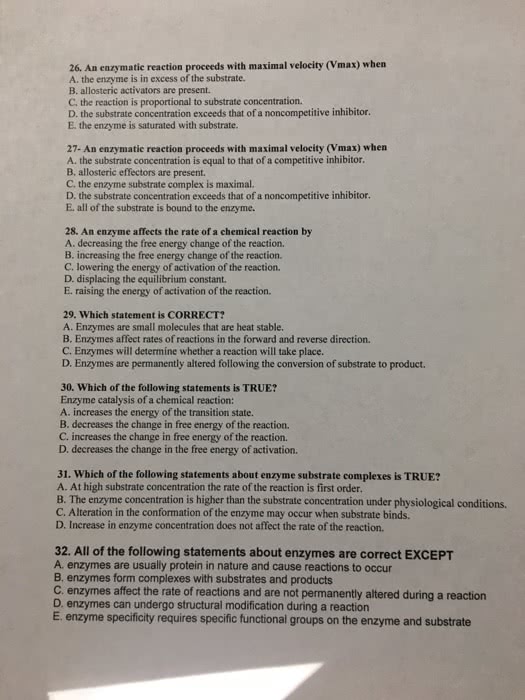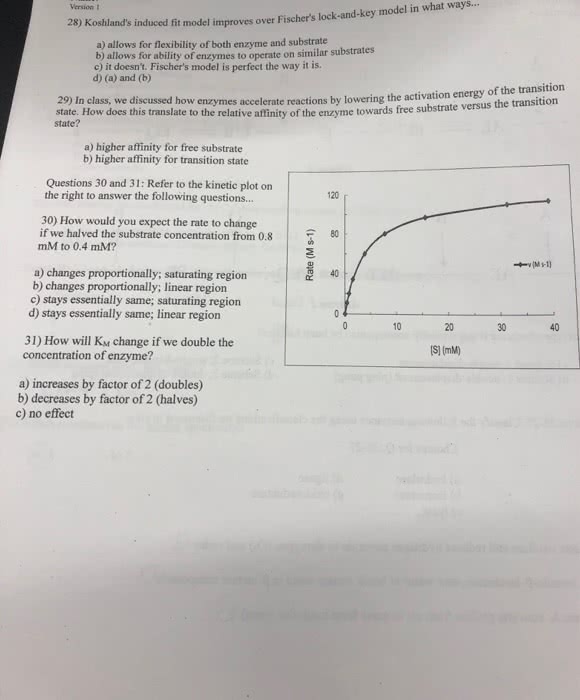MBB 222 Lecture Notes - Lecture 7: Equilibrium Constant, Reaction Rate, Activation Energy
14 views2 pages
20 Dec 2018
School
Department
Course
Professor
Document Summary
Enzymes accelerate reactions by factors a million-fold or more. Most reactions in biological systems do not take place at perceptible rates in the absence of enzymes. Effect of a catalyst or enzyme on activation energy. Must consider the chemical pathway between the endpoints. All chemical reactions proceed through a high-energy intermediate state - the transition state (s ) (do not confuse this with entropy, s). G is the gibbs free energy of activation. G represents the difference in free energy between the transition state s and the substrate, s (i. e. , the reactant). Enzymes increase the reaction rate by decreasing g - they force the substrate into a new transition state with a lower g . Enzymes alter only the reaction rate and not the reaction equilibrium. Example: kf,10-4s-1 and kr,10-6s-1; kf and kr are the forward and reverse rate constants.
Get access
Grade+
$40 USD/m
Billed monthly

Homework Help
Study Guides
Textbook Solutions
Class Notes
Textbook Notes
Booster Class
10 Verified Answers
Class+
$30 USD/m
Billed monthly

Homework Help
Study Guides
Textbook Solutions
Class Notes
Textbook Notes
Booster Class
7 Verified Answers
Related Documents
Related Questions
| 1. | Which of the following is FALSE with respect to coupledreactions? | ||||||||||
|
| 2. | Which of the following reactions is LEAST likely to bespontaneous? One with a: | ||||||||||
|
| 3. | Energy of activation refers to the: | ||||||||||
|
| 4. | Homeostasis refers to maintaining a relatively constantenvironment, and is achieved to a large extent by how enzymes areregulated. For example, when the end product of a pathway regulatesan enzyme that acts early in the same pathway, the effect is mostoften: | ||||||||
|
| 5. | Enzymes function by: | ||||||||||||||
|
| 6. | When carbohydrates are oxidized, the C |


